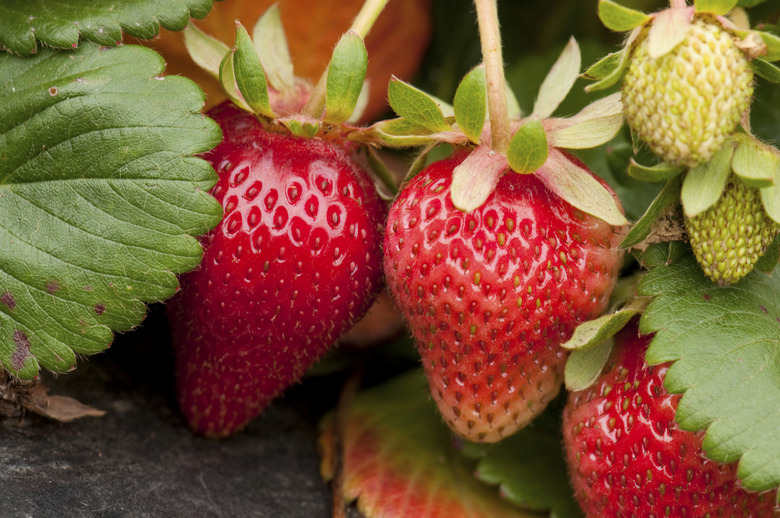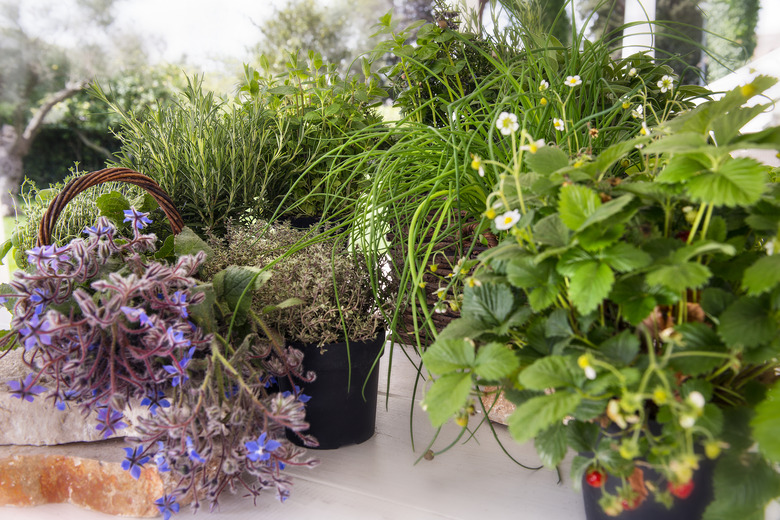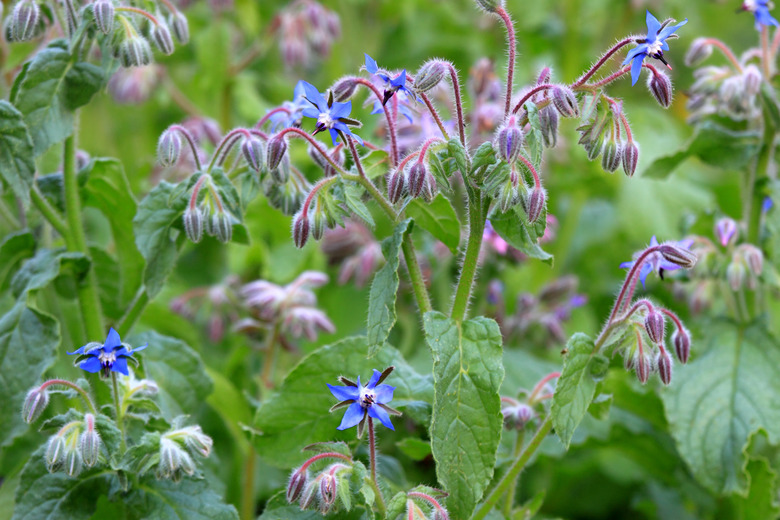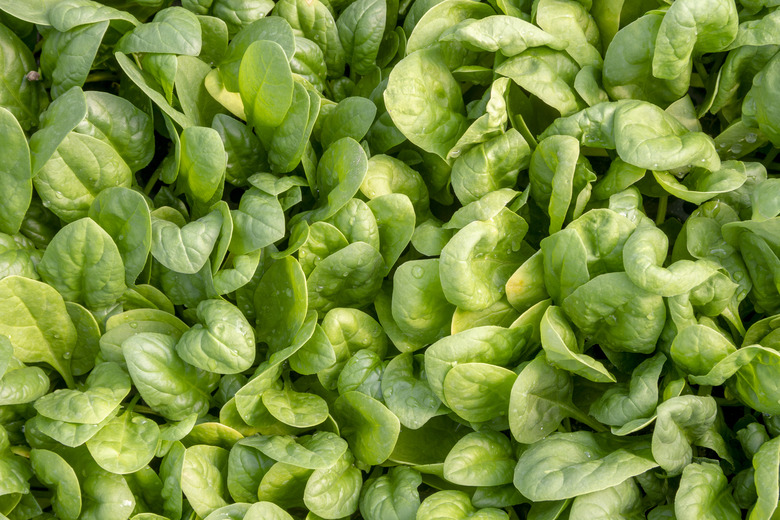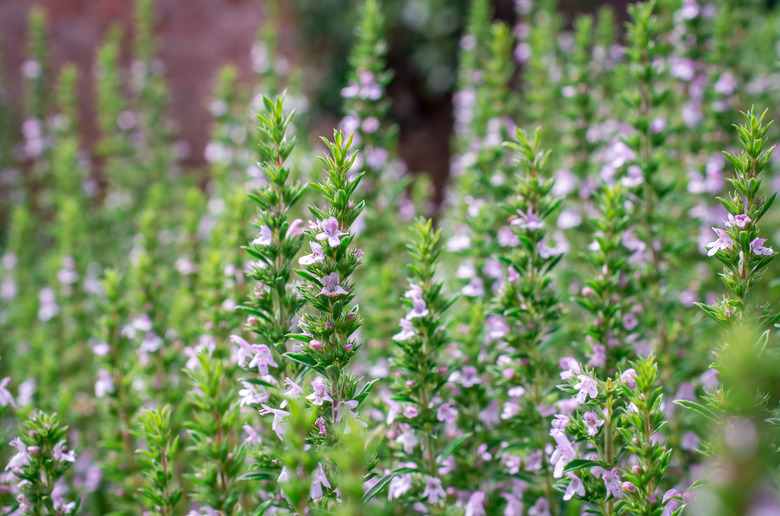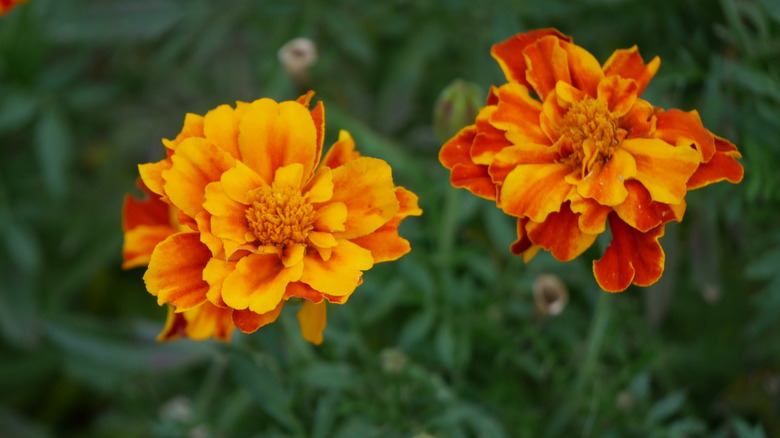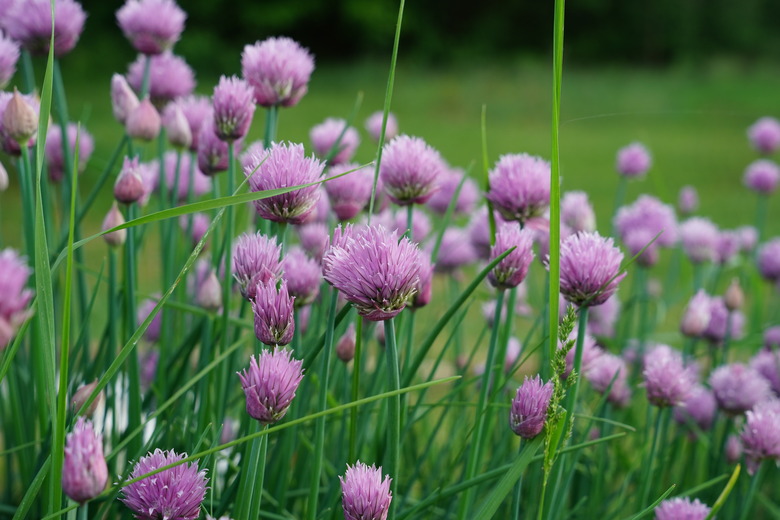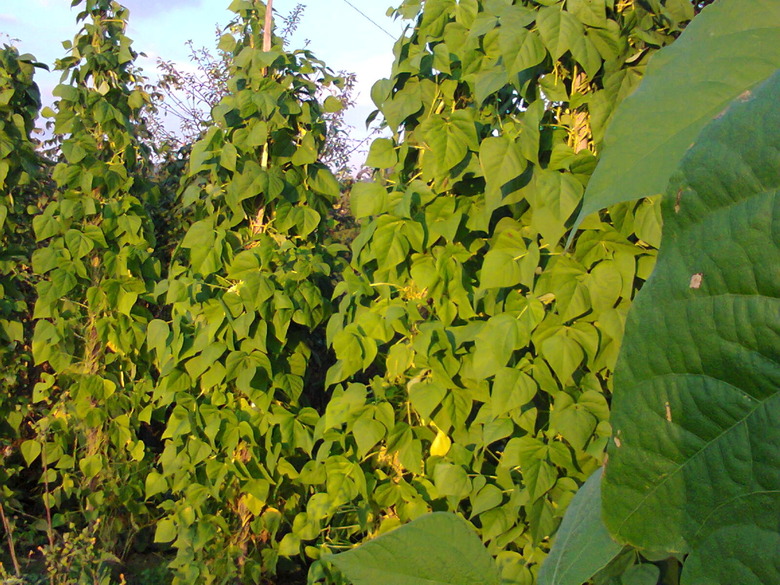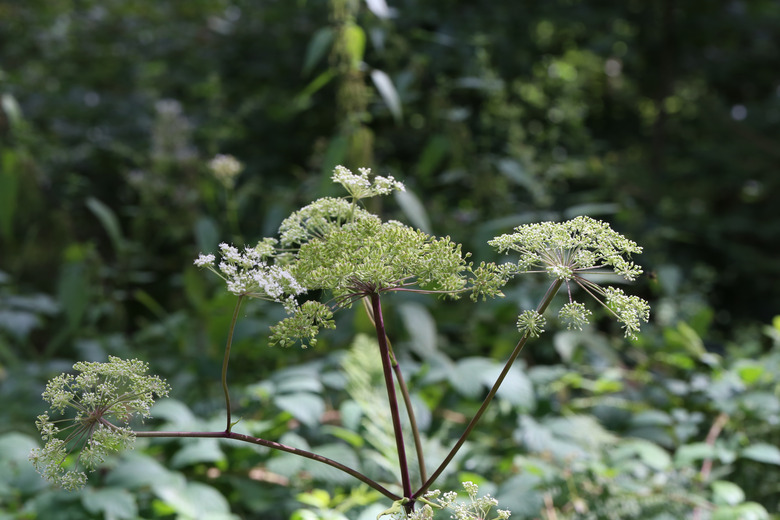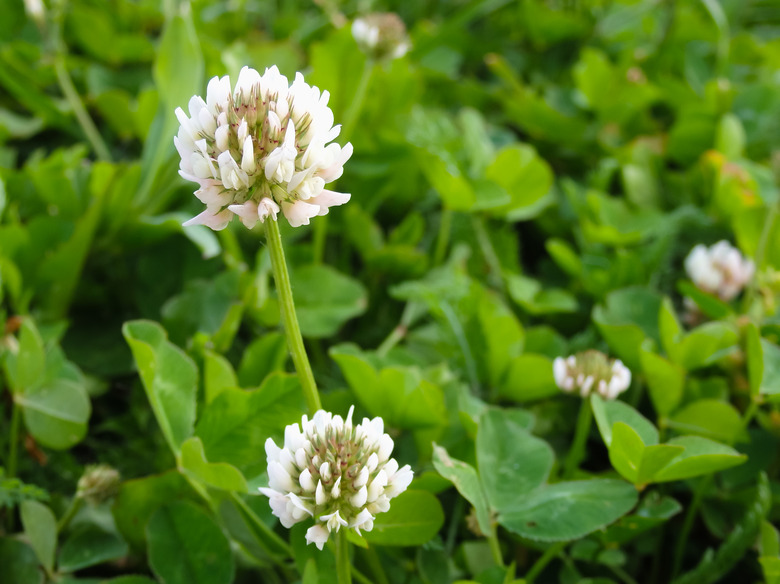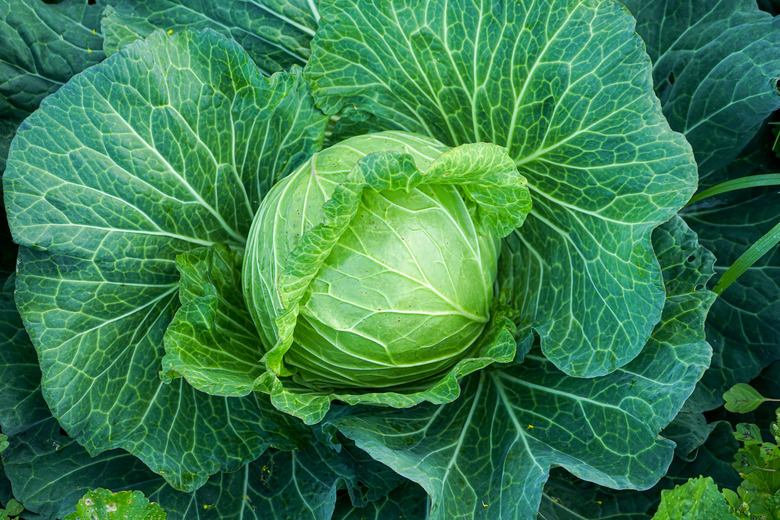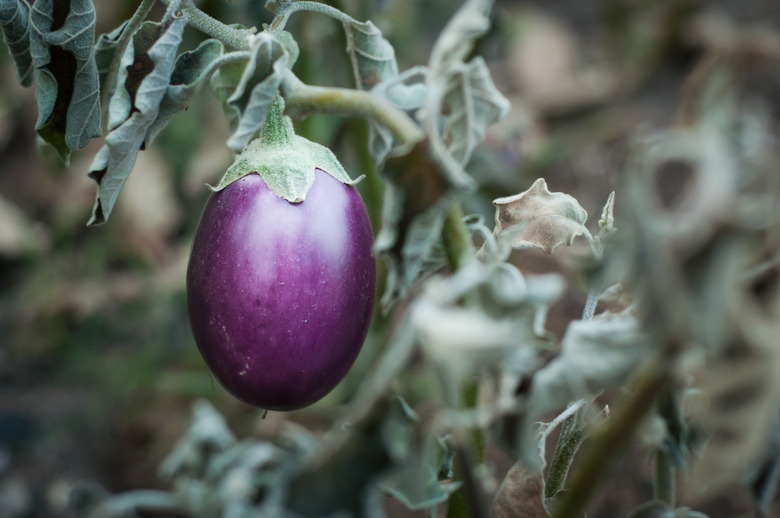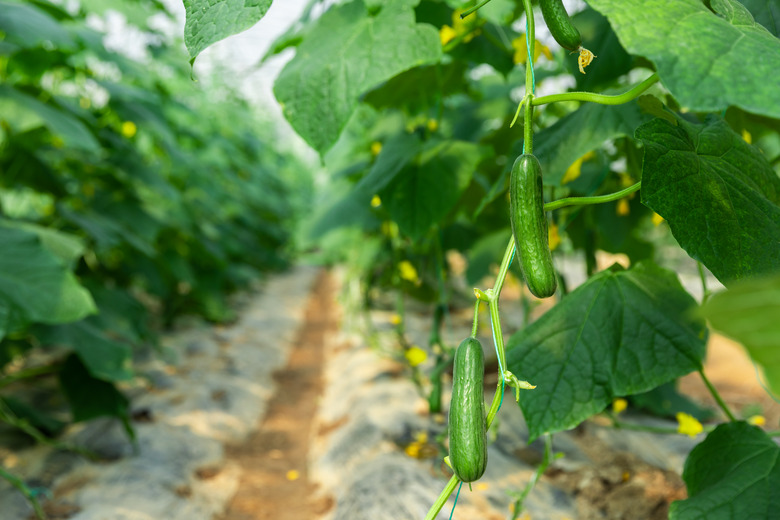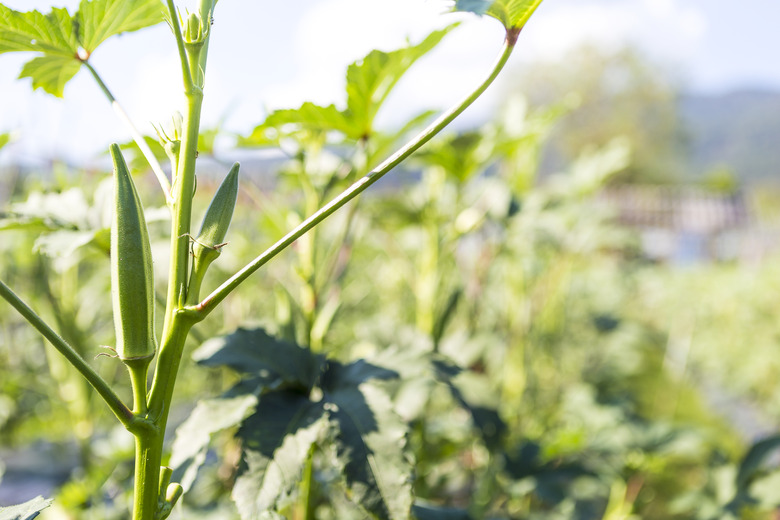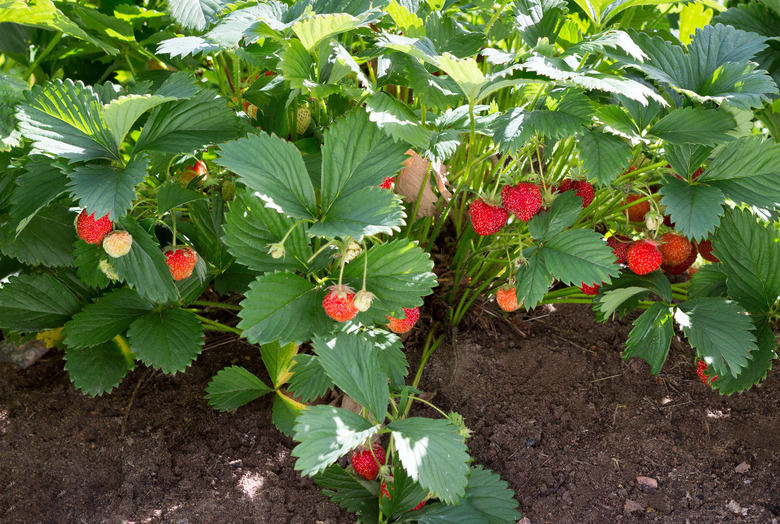A Guide To Companion Planting For Strawberries
Polyculture and Interplanting With Strawberries
Knowing which plants grow well with strawberries and which don't is an important consideration when planning your garden. Although "companion planting" is an often-misused term based on older and unfounded theories that are largely anecdotal, it does have certain practical applications and proven success rates within the realm of scientific research.
The practice of "polyculture," or growing two or more different types of plants together can be more beneficial than "monoculture," or the practice of growing only one type of plant in an area. Companion planting describes the synergistic relationship between plants in a polyculture.
Strawberries (Fragaria x ananassa) are widely grown within USDA plant hardiness zones 4 to 9 for their sugary, fragrant fruit, which attract pests eager to dine on these succulent fruits. Doing everything you can to keep plants healthy and pest free is a good idea. Fortunately, there are a handful of common garden plants that grow well alongside strawberries and help support their growth while keeping some pests at bay.
Companion Plants for Strawberries
A handful of plants act as beneficial companions to strawberries. Whether they attract beneficial insects such as pollinators, ward off pests or share the same growing conditions, the best strawberry companion plants will help keep your berry plants healthy and productive.
Borage
Borage (Borago officinalis) is a great companion plant for strawberries. This showy, purple-flowered annual herb attracts pollinating bees and pest-killing wasps. One drawback to borage is that the mature leaves are scratchy and can irritate sensitive skin, so grow borage near the edge of your strawberry patch to keep it out of the way.
Spinach
Spinach (Spinacia oleracea) grows well with strawberries because it shares the same growing conditions, so they can inhabit the same garden bed. Spinach also shades the soil well with its broad leaves, which will help suppress weed growth around strawberries.
Thyme
Aromatic, low-maintenance thyme (Thymus vulgaris, zones 5 to 9) is another excellent companion for strawberry plants. It deters cabbage worms and attracts hoverflies, which feed on soft-bodied pests such as slugs, aphids, thrips and caterpillars. Thyme works best as a companion when planted in a border around a strawberry bed.
Marigolds
Marigolds (Tagetes spp.) share the same growing conditions as strawberries. These plants can help protect strawberries from root-knot nematodes. French marigolds (Tagetes patula), in particular, offer strong protection against nematodes. Most marigolds are grown as annuals so you must replace them each spring.
Just planting a few marigold plants around strawberries is not the recommended strategy for suppressing root-knot nematodes though. For this biological control method to be effective, grow marigolds thickly on the proposed strawberry site the year before planting your crop, and till them into the ground at the end of the season. This releases the nematode-suppressing chemicals into the soil.
Alliums
Alliums such as onions (Allium cepa) and chives (Allium schoenoprasum, zones 3 to 9) make good companions for strawberries, because they repel pests with their strong scent—and they also attract pollinators with their showy flowers.
Legumes
Strawberries grow well with legumes such as bush beans (Phaseolus vulgaris). Legumes are nitrogen-fixing annuals that will improve the soil around your fruit and vegetable garden, which will help boost your strawberry crop.
Caraway
Although caraway (Carum carvi, zones 3 to 9) is less common than many herbs, it is a beneficial plant if you are growing strawberries. It attracts parasitic wasps, lacewings and flies that feed on the mites and aphids that typically damage strawberries.
White Clover
White clover (Trifolium repens, zones 4 to 9) is another beneficial companion for strawberries. Interplanting white clover groundcover between strawberry rows creates a living mulch, which protects the strawberry plants from moisture and temperature fluctuations.
Like legumes, white clover will also fix nitrogen into the soil to encourage strong foliage growth in strawberries and other plants nearby.
Plants to Avoid Near Strawberries
Not all plants grow well with strawberries, and some are so harmful that strawberries should not be grown in the same soil where these plants have grown in previous years.
Brassica Species
The brassica family of plants includes broccoli (Brassica oleracea var. botrytis), cabbage (Brassica oleracea var. capitata) and collards (Brassica oleracea var. acephala).
All brassicas compete with strawberries for nutrients and water, which can cause both plants to perform poorly. For that reason, they shouldn't be grown as strawberry companions.
Nightshade Species
Nightshade crops such as tomatoes (Solanum lycopersicum, zones 10 to 11), peppers (Capsicum annuum), eggplant (Solanum melongena) and even potatoes (Solanum tuberosum) should not be grown near strawberries because they attract aphids. They also attract and often host nematodes that will damage strawberry plants, as well as the highly damaging fungal disease verticillium.
Melons and Other Cucurbits
The problem with planting strawberries near cucurbits such as cucumbers (Cucumis sativus) and melons (Cucumis melo) is a matter of space. Cucurbits spread their long stems over the surrounding soil while strawberries spread and reproduce via runners. They cannot share the same space without one of the plants suffering from a lack of space and resources.
Okra
Another problematic plant to grow in a strawberry patch is okra (Abelmoschus esculentus). Like nightshade species, okra also attracts or harbors the fungal disease verticillium. The threat of verticillium infection is serious, so you should not grow strawberries in a bed where okra or nightshade species have been cultivated in previous years.
Growing Strawberries at Home
Choosing companion plants is only the beginning of growing strawberries. They also need good growing conditions, correct planting and the right kind of care to produce a crop of berries.
Growing Conditions
Strawberries grow best in full sun on fertile, well-draining soil. Choose a site that receives 6 to 10 hours of direct sun.
Improve clay soil with a 4-inch layer of compost that you work into the soil, and plant the strawberry transplants on mounds, called the hill method, to allow for drainage.
You can also choose other planting methods for strawberries, such as the matted-row, raised-bed and ribbon methods. Amend sandy soil with a 1-inch layer of compost worked into the soil to improve its moisture retention and nutrient content.
Planting Strawberries
Plant strawberries in spring as soon as the soil warms. If planting in rows, the plants should be spaced 18 inches apart in rows with 4 feet of space between them. If planting on hills, plants should be spaced 12 inches apart with 2 to 3 feet between rows. Wide spacing will provide enough room to walk between the plants at harvest time. Cover the roots of the plant, but leave the crown at soil-level.
Spread a few inches of straw mulch between the plants and along the rows to conserve soil moisture and to keep weeds down.
Care Basics
Strawberry plants need continual care during the growing season. Watering is the most important part of caring for strawberries, but giving fertilizer is also beneficial for strawberries grown in sandy soil.
- Provide 1 inch of water per square-foot per week in spring and summer. Water at the base of the plants rather than from overhead to keep excess moisture off the leaves.
- Fertilize strawberries just after planting using 10-10-10 fertilizer at a rate of 5 to 8 pounds per 100 feet of row, or use an organic equivalent. Fertilize again in late summer with 3 pounds of 10-10-10 fertilizer per 100 feet of row or an organic equivalent.
- Remove any weeds that penetrate the mulch layer before they get too big. Pull them up by hand rather than using a hoe, because strawberries have shallow roots that are easily damaged.
References
- West Virginia University Extension: Companion Planting
- University of Illinois Chicago Heritage Garden: Strawberry (Fragaria x Ananassa)
- University of California Master Gardeners of San Mateo and San Francisco Counties: Better Together – The New Science of "Companion Planting"
- Utah State University Extension: Strawberries in the Garden
